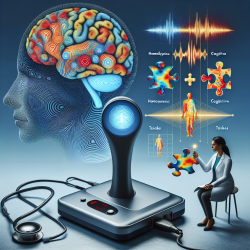Introduction to fNIRS in Schizophrenia Diagnosis
In the realm of mental health, particularly in diagnosing schizophrenia, technological advancements are paving the way for more accurate and accessible diagnostic tools. A recent study published in Frontiers in Psychiatry explores the potential of portable functional near-infrared spectroscopy (fNIRS) as an adjunct diagnostic tool for schizophrenia, especially in developing countries.
Understanding fNIRS
fNIRS is a non-invasive neuroimaging technique that measures brain activity by monitoring changes in blood oxygenation and flow. It is similar to functional MRI (fMRI) but offers a more cost-effective and portable solution, making it ideal for use in regions with limited access to advanced medical facilities.
The Study: Key Insights
The study involved 157 participants, divided into two groups: 110 individuals diagnosed with schizophrenia and 47 healthy controls. The researchers used a 48-channel portable fNIRS device to monitor hemodynamic responses in the frontal cortex during two cognitive tasks: the Stroop Color-Word Test (SCWT) and the Verbal Fluency Test (VFT).
Findings and Implications
- Frontal Lobe Activation: The study found that individuals with schizophrenia did not show significant activation in the frontal lobe during the cognitive tasks compared to healthy controls.
- Diagnostic Accuracy: The area under the ROC curve for the right orbitofrontal cortex was maximal during the VFT, with a sensitivity of 85% and specificity of 72%, highlighting fNIRS's potential as a reliable diagnostic tool.
- Cost-Effectiveness: The portability and low cost of fNIRS make it a viable option for widespread use in developing countries, where traditional neuroimaging methods like MRI and PET are often inaccessible.
Practical Applications for Practitioners
For practitioners, incorporating fNIRS into diagnostic protocols could enhance the accuracy of schizophrenia diagnoses. The ability to objectively measure brain activity and differentiate between schizophrenia and other psychiatric disorders can lead to more targeted and effective treatment plans.
Encouraging Further Research
This study opens the door for further research into the use of fNIRS in diagnosing other psychiatric conditions. Practitioners and researchers are encouraged to explore additional cognitive tasks and neuroanatomical regions to refine and expand the diagnostic capabilities of fNIRS.
To read the original research paper, please follow this link: Differentiating people with schizophrenia from healthy controls in a developing Country: An evaluation of portable functional near infrared spectroscopy (fNIRS) as an adjunct diagnostic tool.










